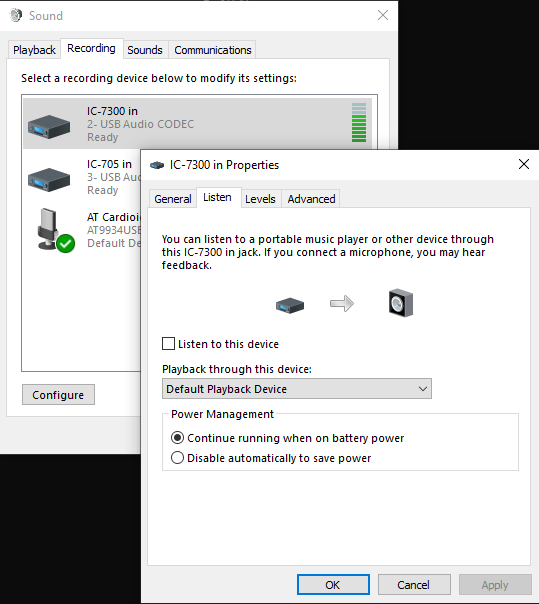Howdy all,
My experience with Wfview is somewhat limited and pretty much trouble free since installing it on both a Win10 laptop and a MacBook Pro while using FreeDV and an Icom IC-705
Yesterday I had a problem Using FreeDV and everything was working very poorly.
Choppy communication to and from the IC-705 and Wfview, or between the IC-705 and the wireless router.
Also, when I attempted to transmit, The IC-705 became “stuck” in transmit such that the only way I could return to receive was by rebooting the radio. It didn’t matter if I was at full power or no power.
Transmit commands were being send from FreeDV (and then WFView) and it would transmit but it wouldn’t “release” the PTT
Then I tried Wfview by itself and the same thing was happening…it would become “stuck” in transmit. sometimes closing WFview would release the IC705 and sometimes it wouldn’t
All very strange.
As it turned out, It wasn’t FreeDV, WFView or even the IC705 that was the problem. It appears to have been the wireless router (TPLINK AX1800)
Once I rebooted the router all was good in the “Network Neighborhood”!
This is the second time I have had to reboot the router because a bunch of weird things happened that appeared maybe RFI related or loose connected USB cords
The point here is that when you’re having problems like this and everything worked before, the natural tendency is to blame the newest piece of software if there is one (or RFI) !
In this case, it was clearly the wireless access point. The IC705 and maybe the IC905 are probably the most prevalent (wifi capable) radios out there
I would say ICOM, Kenwood, Yaesu, Elecraft and others will be increasing the number of wifi capable radios they offer in the future.
It might be useful at this point to maybe discus access point/router settings and/or different models of WIFI routers and access points that possibly work “better” than others
I recently bought wifi operable door locks for my house and they worked with one router but wouldn’t work with a different one.
I don’t think it was (wifi) channel congestion because I live on 2.5 acres and my neighbors are pretty far away from me. (I also had no microwave ovens running around me)
Anyone else with similar experiences?
73/Rick
WA6III
